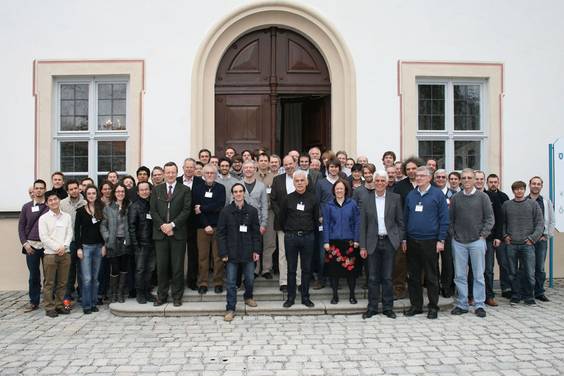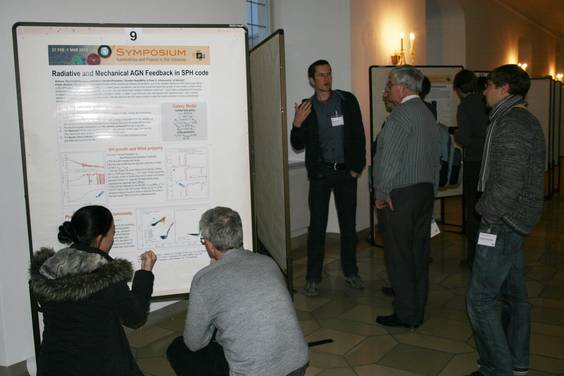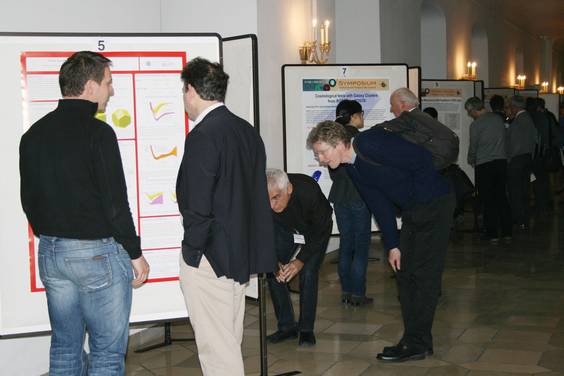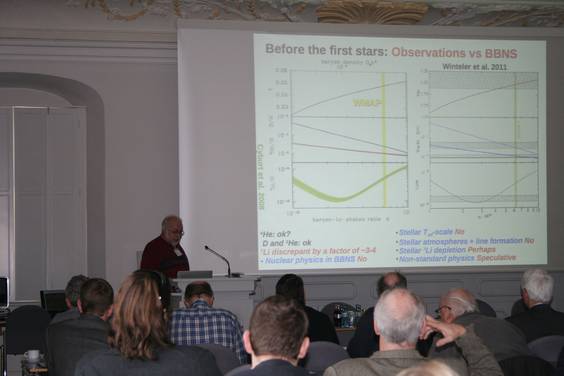21.03.2012
Cluster Symposium „Symmetries and Phases in the Universe”
Researchers introduce new scientific findings
For the second time, the Excellence Cluster Universe hosted the Symposium “Symmetries and Phases in the Universe”. For that purpose, the Cluster invited internationally renowned scientists to Kloster Irsee, located in the Bavarian countryside, from 27 February to 1 March.
During this interdisciplinary conference the roughly one hundred participants focused on all questions regarding the formation and evolution of the universe. Star formation and stellar evolution, galaxy evolution and cosmic nucleosynthesis, high-energy astrophysics, Dark Matter and Dark Energy, particle physics, gravitation, inflation and String Theory as well as CERN’s Large Hadron Collider were the symposium’s main topics.
Highlights of this event were, among others, the talk by Bruno Leibundgut (ESO) about the Nobel Prize awarded topic on Supernova cosmology. Jeremiah Ostriker from Princeton University introduced the latest results from the Cluster-Princeton cooperation on galaxy physics.
A vivid discussion between Georgi Dvali (LMU, MPP) and Cliff Burgess (Perimeter Institute) turned out to be quite entertaining for the audience. Armed with crayons, they fought a battle about gravitation theory on the black board.
The last day of the symposium mainly concentrated on the world’s most powerful particle collider, the Large Hadron Collider at CERN. CERN’s general director Rolf-Dieter Heuer and CERN’s long time leader of its theory division John Ellis talked about the current status of the LHC and were quite positive regarding the discovery of the Higgs boson.
At the end of the symposium, the Cluster coordinators Stephan Paul (TUM) and Andreas Burkert (LMU) were highly satisfied with its outcome: “It is great to meet every three years at Irsee and to take stock of the latest scientific findings. Our symposium makes a big contribution in connecting particle- and nuclear physicists with astrophysicists and cosmologists.”









